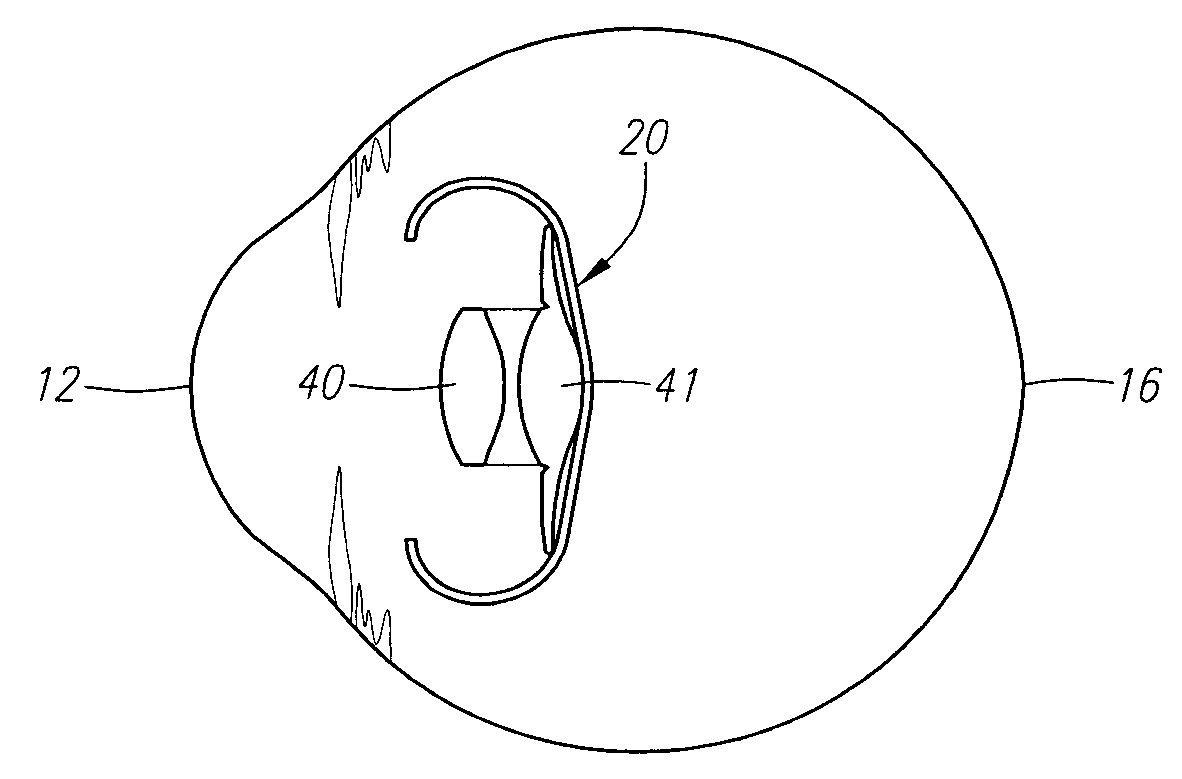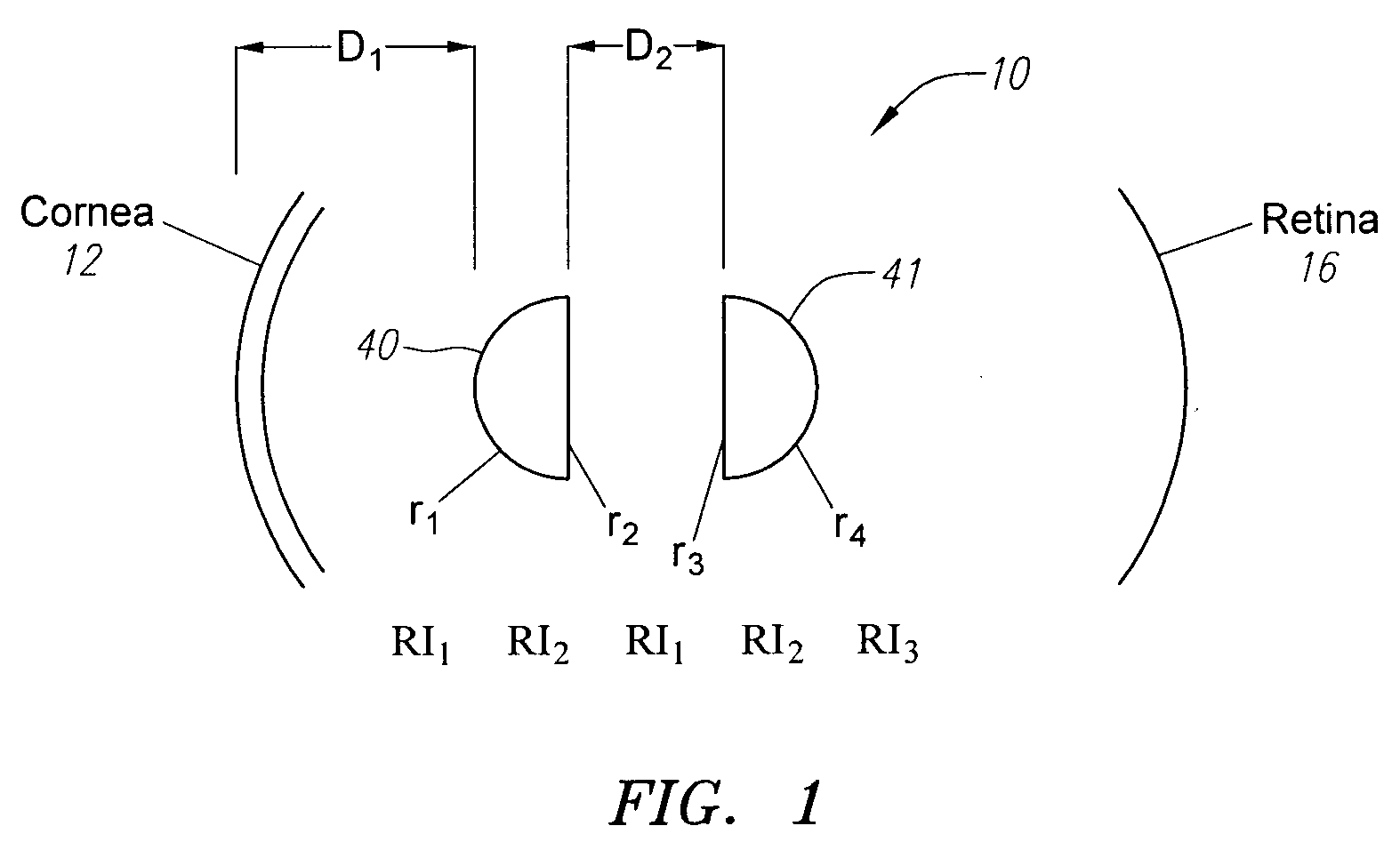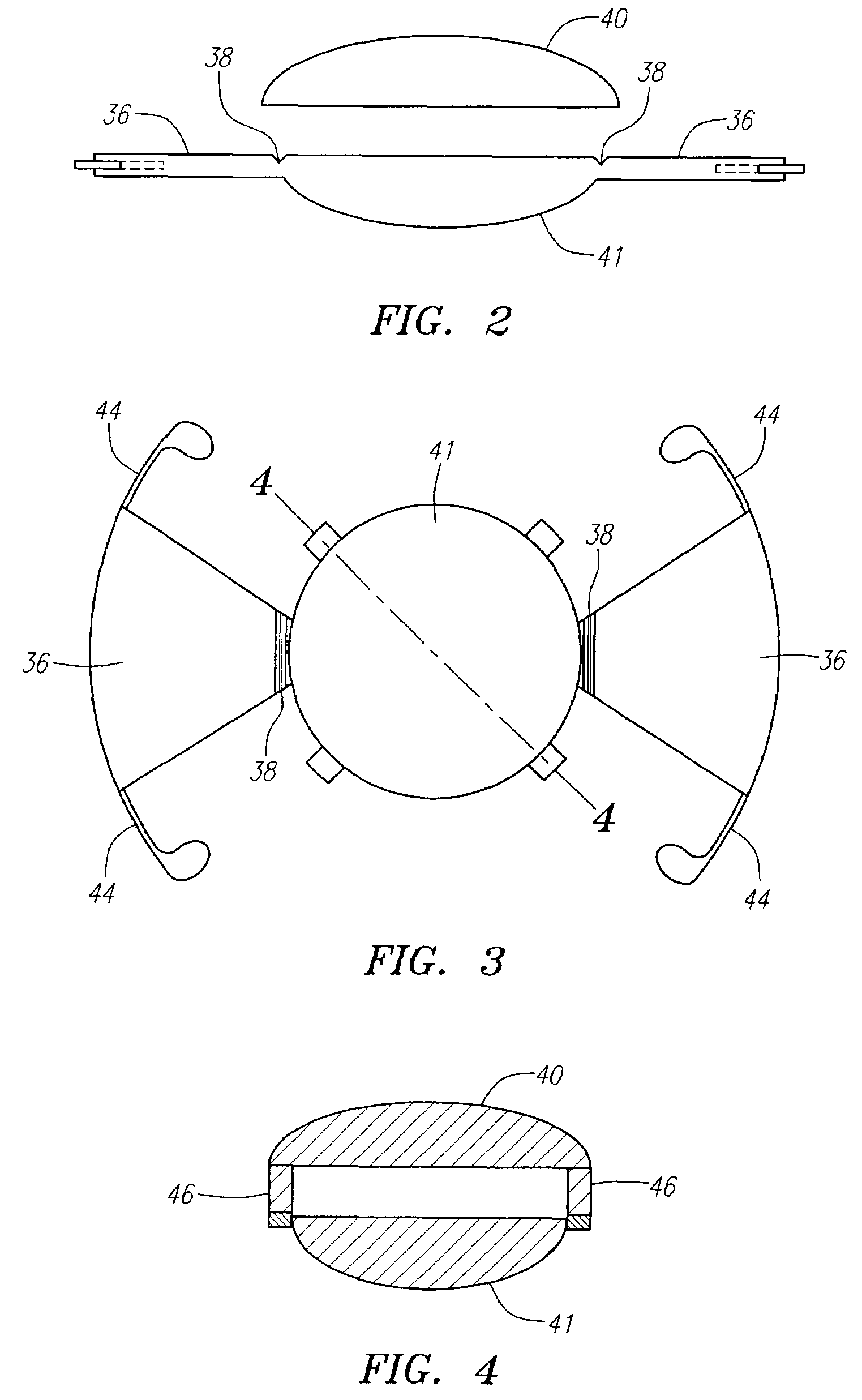Multiocular Intraocular Lens Systems
a multi-ocular, intraocular technology, applied in optics, medical science, instruments, etc., can solve the problems of bifocal intraocular lenses, only about 40% of available light in bifocal images, and the ability of the eye to function properly, so as to increase the amplitude or diopter of accommodation
- Summary
- Abstract
- Description
- Claims
- Application Information
AI Technical Summary
Benefits of technology
Problems solved by technology
Method used
Image
Examples
Embodiment Construction
[0034]The lens system comprises two optics fused together, one in front of the other, as will be further explained beginning with FIG. 1 below. T-shaped extended portions or plate haptics 36 extend from diametrically opposite edges of the optic. These haptics include haptic members or plates 36 proper having inner ends joined one or other of the optics and opposite outer free ends and lateral fixation fingers at their outer ends. The haptic plates 36 may be longitudinally tapered so as to narrow or widen in width toward their ends or may be wider in their periphery and narrower adjacent to the optic. The optical system 34 is movable anteriorly and posteriorly relative to the haptics 36. The preferred lens embodiment illustrated is constructed of a resilient semi-rigid material and has flexible hinges 38 which join the inner ends of the haptic plates 36 to one of the optics. The haptics are relatively rigid and are flexible about the hinges anteriorly and posteriorly relative to the ...
PUM
 Login to View More
Login to View More Abstract
Description
Claims
Application Information
 Login to View More
Login to View More - R&D
- Intellectual Property
- Life Sciences
- Materials
- Tech Scout
- Unparalleled Data Quality
- Higher Quality Content
- 60% Fewer Hallucinations
Browse by: Latest US Patents, China's latest patents, Technical Efficacy Thesaurus, Application Domain, Technology Topic, Popular Technical Reports.
© 2025 PatSnap. All rights reserved.Legal|Privacy policy|Modern Slavery Act Transparency Statement|Sitemap|About US| Contact US: help@patsnap.com



